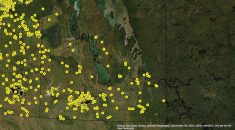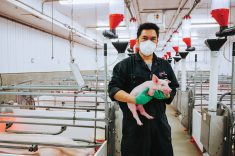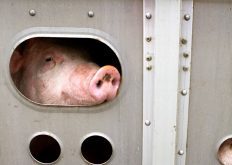If you’re a hog farmer in a financial mess, there are three ways to get out of it – earn, refinance or sell out.
Unfortunately, not one of them is easy, financial consultant Andrew DeRuyck told the recent Manitoba Swine Seminar in Winnipeg.
Most producers would prefer to earn their way out if possible. It may not be impossible. Market prices began recovering last fall and, although they have slumped recently, market analysts expect a rebound again in spring.
However, many producers have accumulated so much debt, it will take years to pay it off. For them, DeRuyck recommended a long-term view to decide if future recovery is possible. Taking an off-farm job to supplement cash flow is an option but it’s also a limited one, he said.
Read Also

Manitoba Ag Days 2026 coming up fast
Canada’s largest indoor farm show, Manitoba Ag Days, returns to Brandon’s Keystone Centre Jan. 20-22, 2026. Here’s what to expect this year.
“It’s tough to find a job that’s going to service a $3 million hog barn loan,” DeRuyck said after taking part in a panel discussion on recovering from the financial crisis in the hog industry.
TOUGH DECISIONS
If producers want to stay in the business but can’t earn enough to do it, refinancing their operations could be an answer. However, that also comes with hurdles, said DeRuyck, who works out of Pilot Mound.
Not many lenders are looking for hog farm clients, given the current state of the industry, and DeRuyck said his own clients experienced “very low uptake” from banks and other lending institutions for a recent $400-million federally backed loan program aimed at restructuring producer debt.
The program was roundly criticized by hog farmers who said lenders often refused to accept their business plans as a prerequisite for restructuring short-term debt into long-term 15-year loans. In fact, Ottawa put up only two-thirds of the $400 million it promised to backstop the loans because of the low takeup.
LOW UPTAKE
If producers can’t earn their way out of the crisis and can’t refinance their way out either, selling their operations is the remaining option. Unfortunately, that’s a problem, too, DeRuyck said. Hog barns have dropped so much in value that a producer might get only 10 to 20 cents on the dollar for a modern facility. Creditor sales may net even less money, he said.
There is, however, a fourth option to consider, and that’s mediation, said DeRuyck, who also offers mediation services along with his business partner.
Mediation can be a way of coming to terms with one of the three other options. It’s a meeting of minds in a neutral setting which enables both farmer and creditor to feel comfortable with the chosen route, whether it’s staying in business or getting out, DeRuyck said.
The panel discussion in which DeRuyck took part was notable for a lack of response from producers, despite the timeliness of the topic. Only a few asked questions during a discussion period. Later, DeRuyck suggested hog farmers are in a holding pattern waiting to see if the market recovery is real or temporary. He predicted producers will have more to say when their Advance Payments Program come due in two years.
COMING DUE
Repayments for the program for hog producers are currently under a stay, the deadline having been extended several times. Producers must have repayment plans in place by March 31, 2011. The repayment deadline is March 31, 2012.
Even with an extended deadline, some producers won’t be able to repay their advances and may be forced out of business, said James Hofer, a Manitoba Pork Council director.
The council estimates Manitoba has 750 active hog operations, about half what there were five years ago.
“I’m afraid the exodus isn’t over yet,” said Hofer. “I believe there’s still shakeout to go.” [email protected]
———
“It’stoughtofinda jobthat’sgoingto servicea$3-million hogbarnloan.”
– ANDREW DERUYCK














